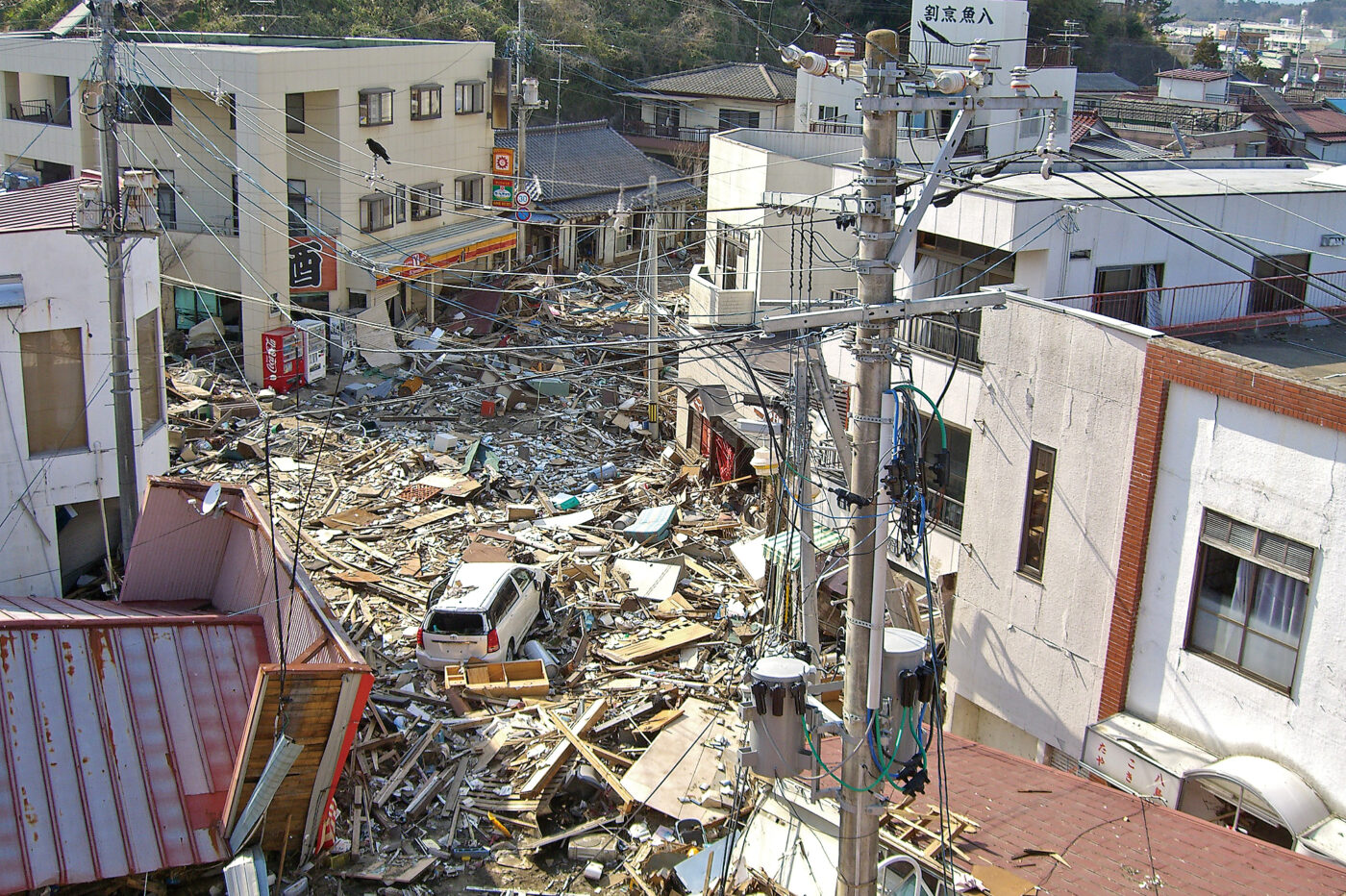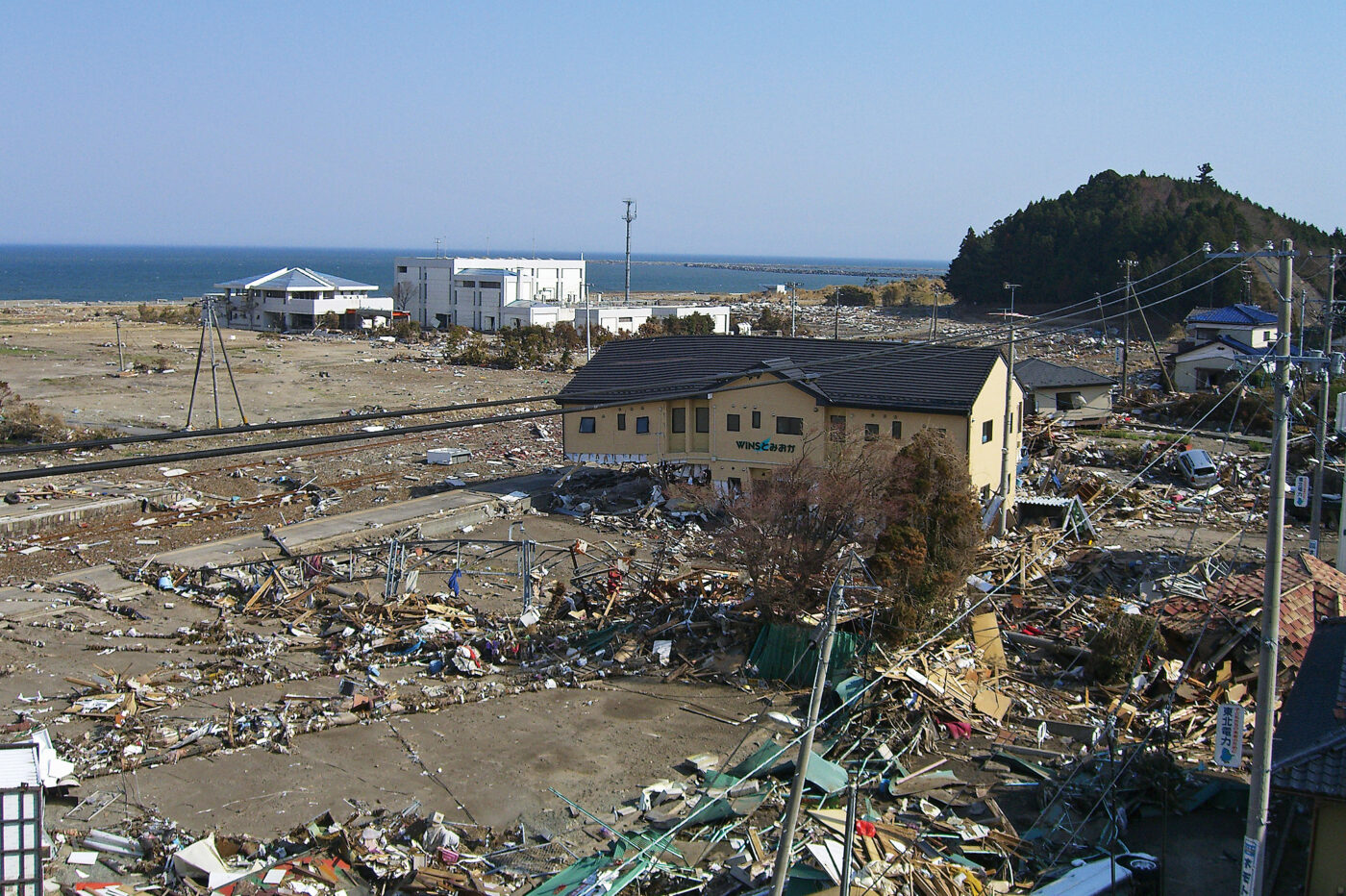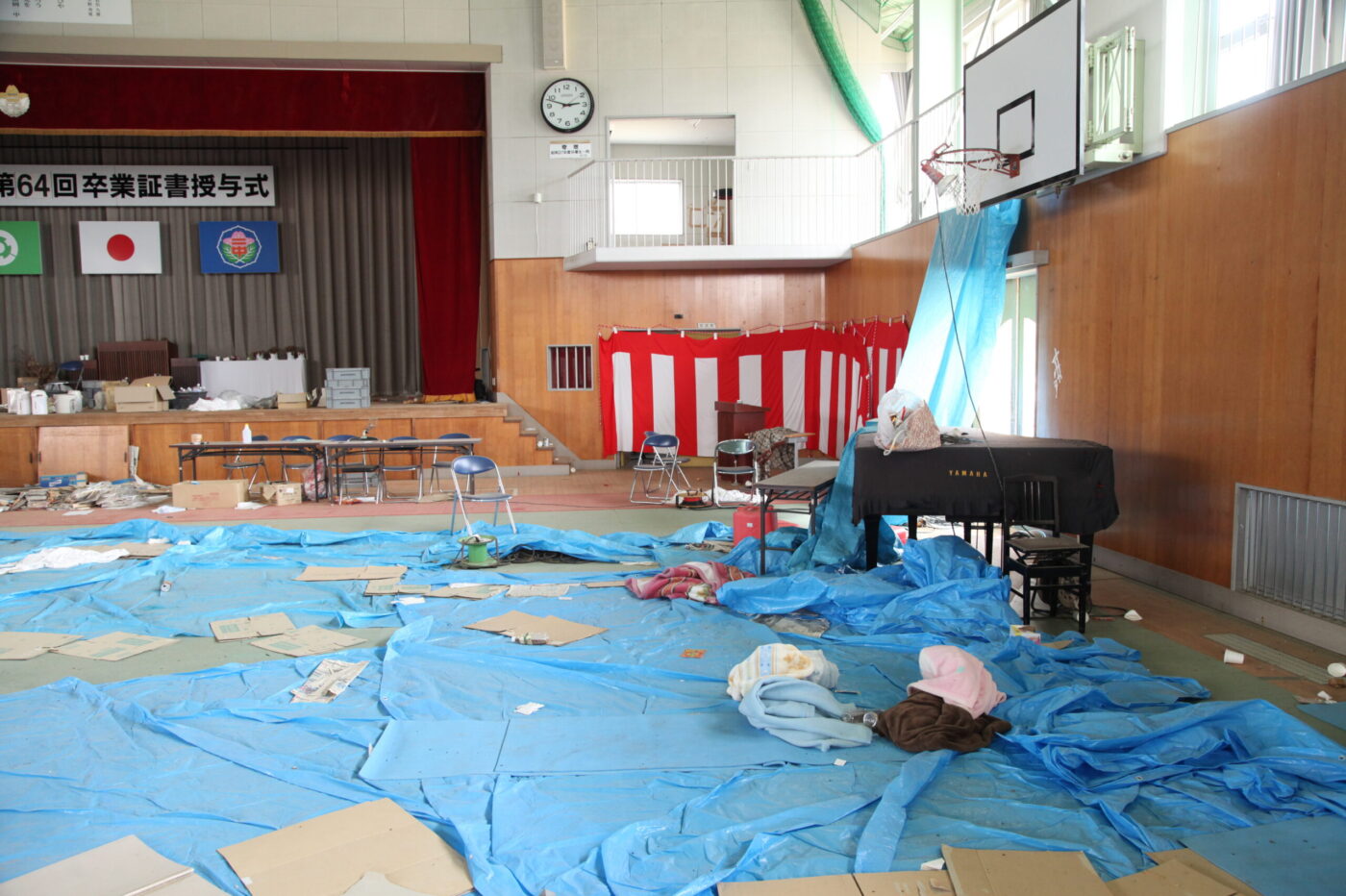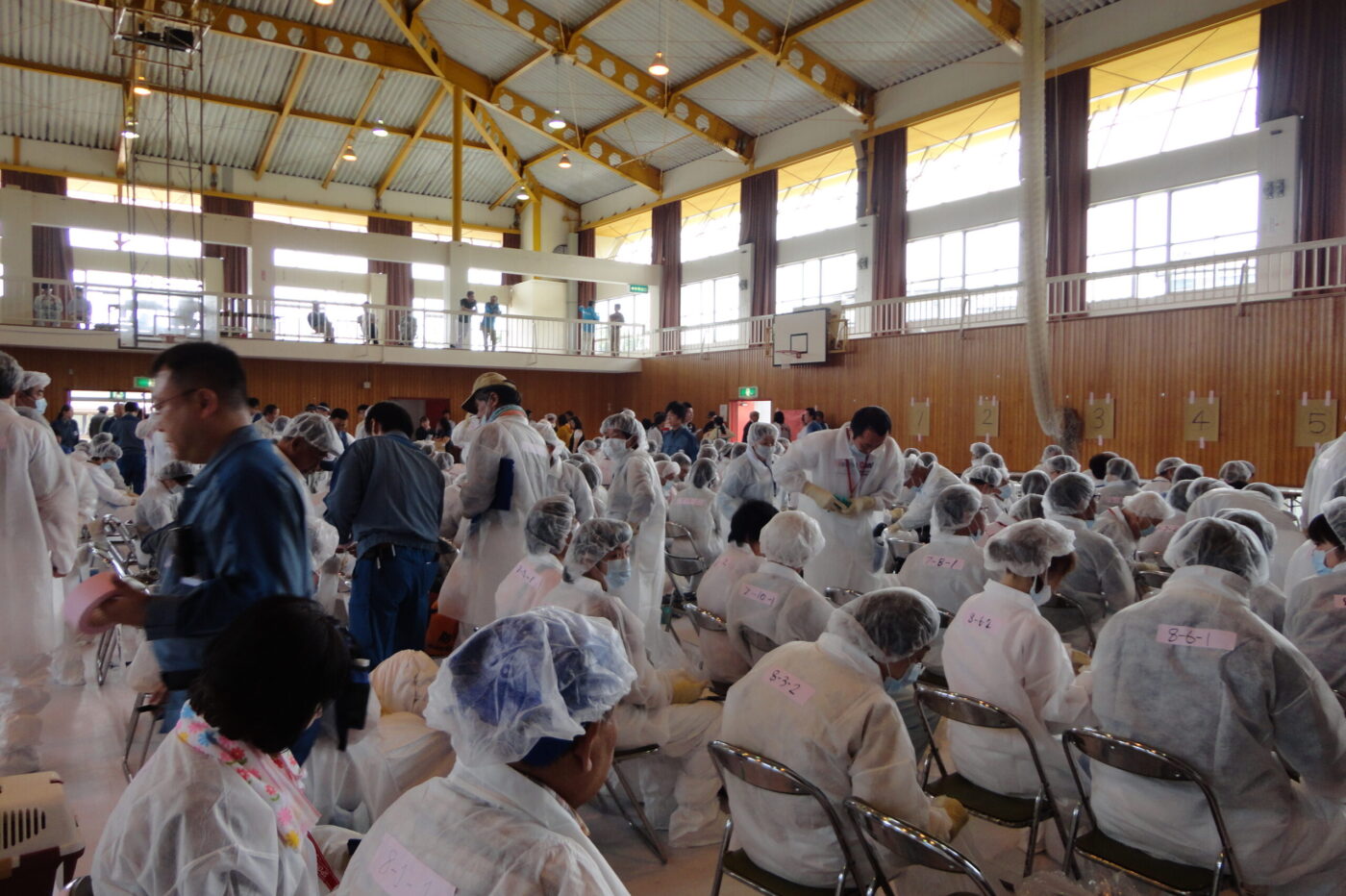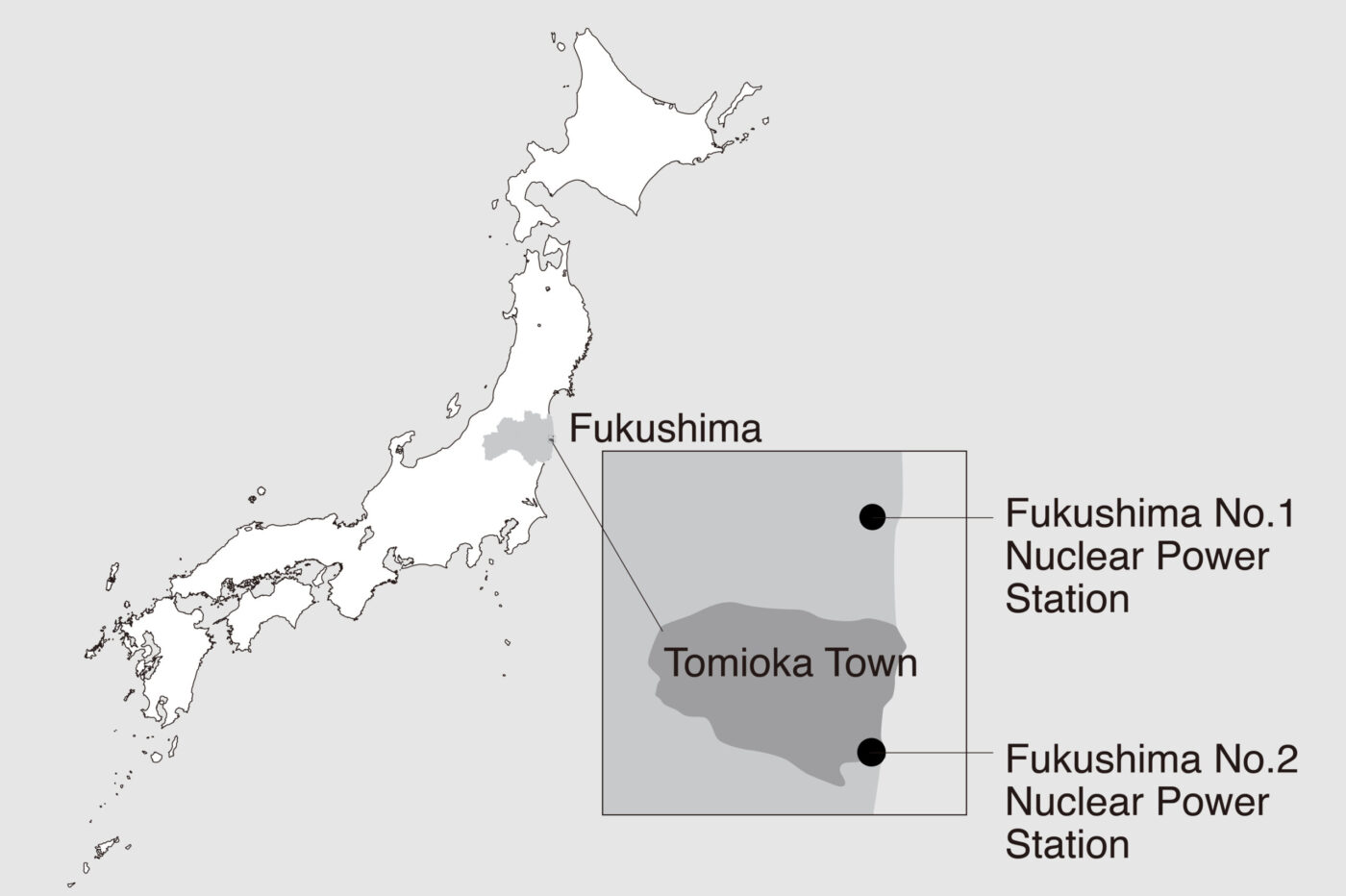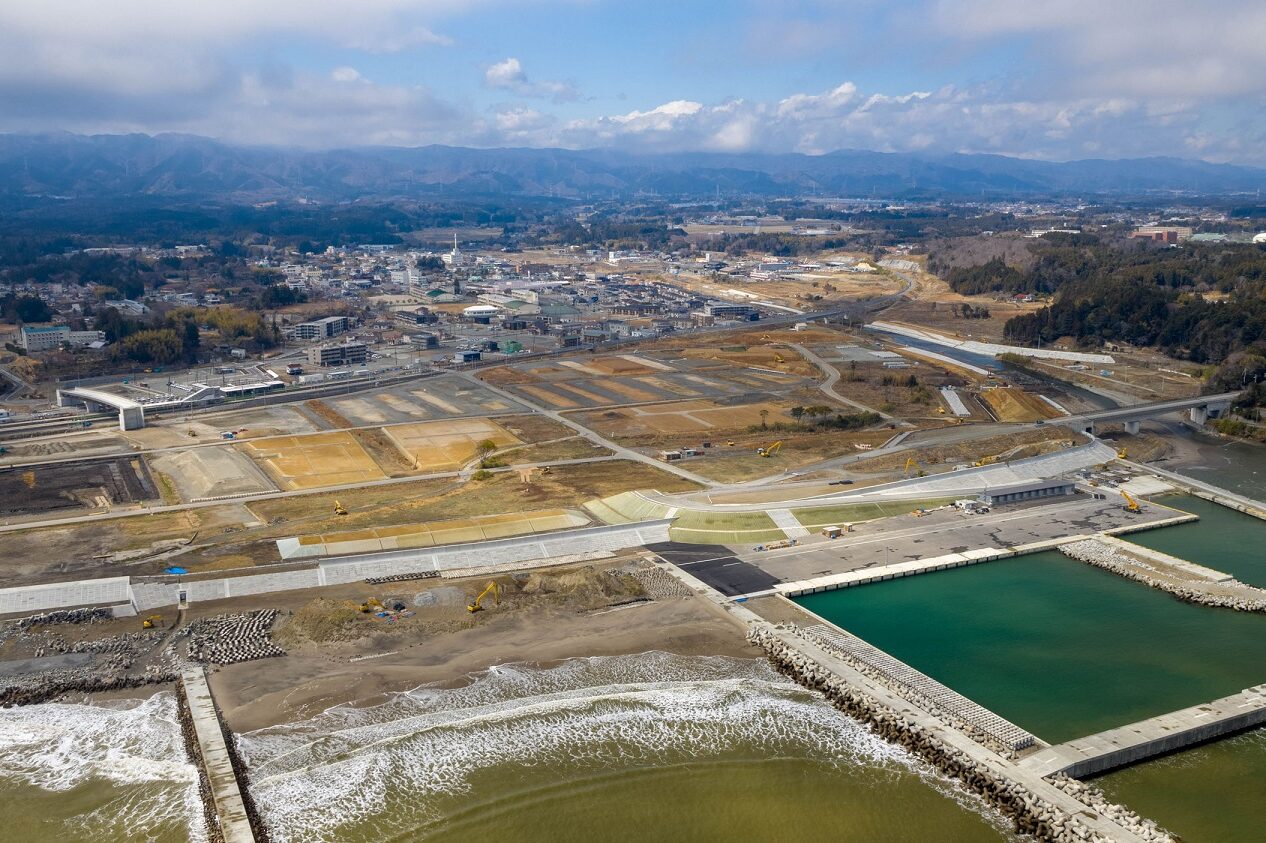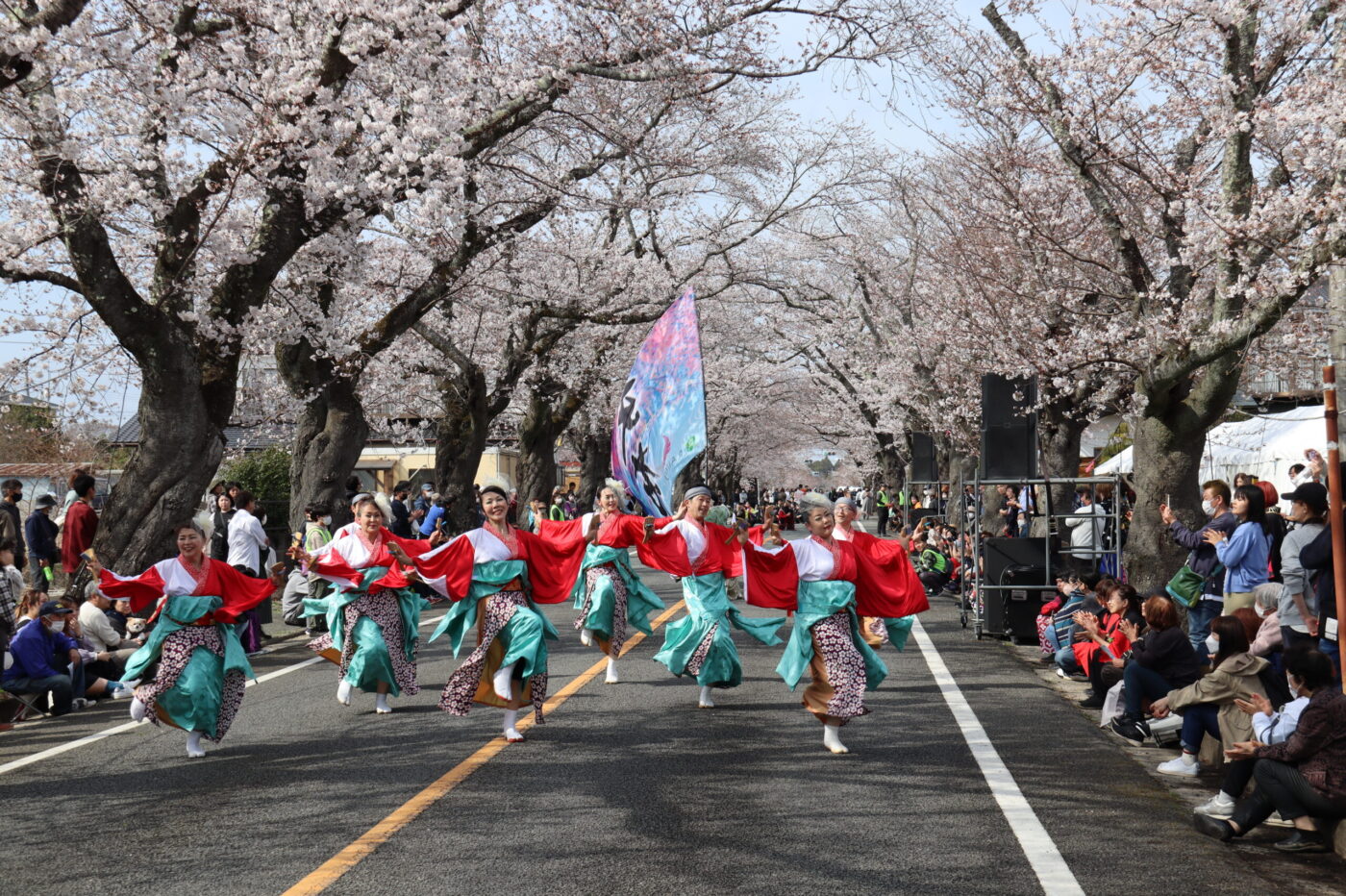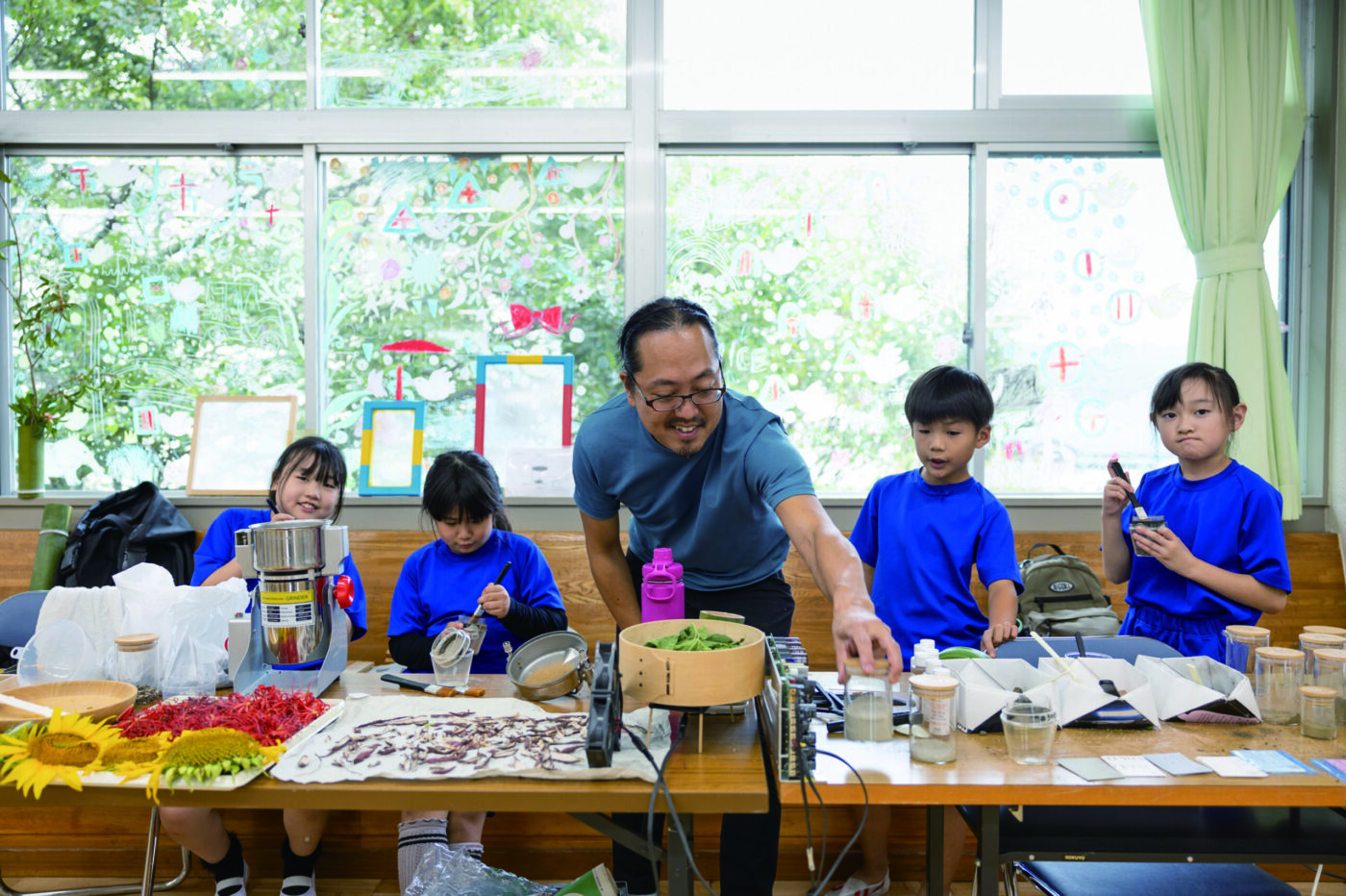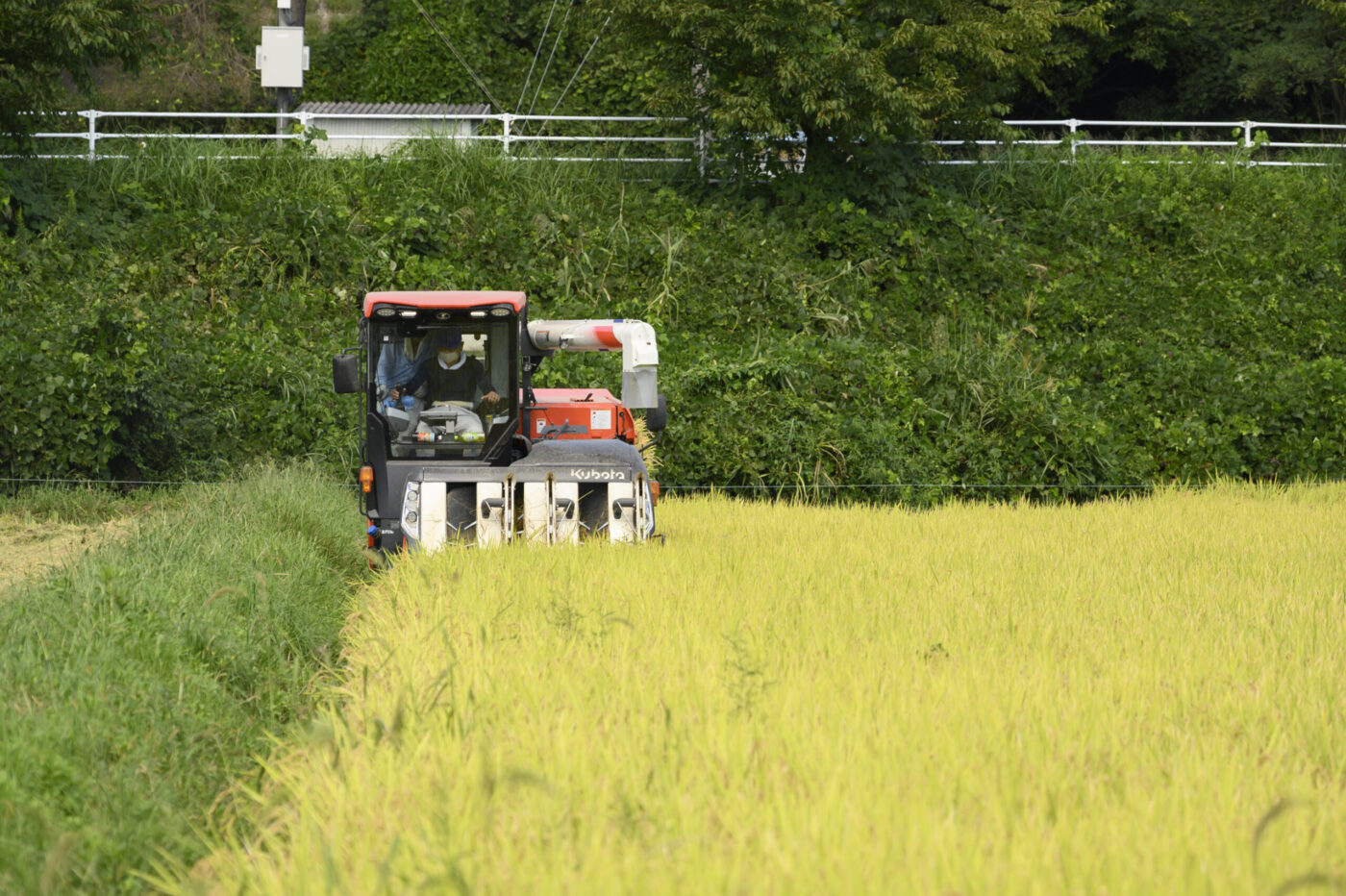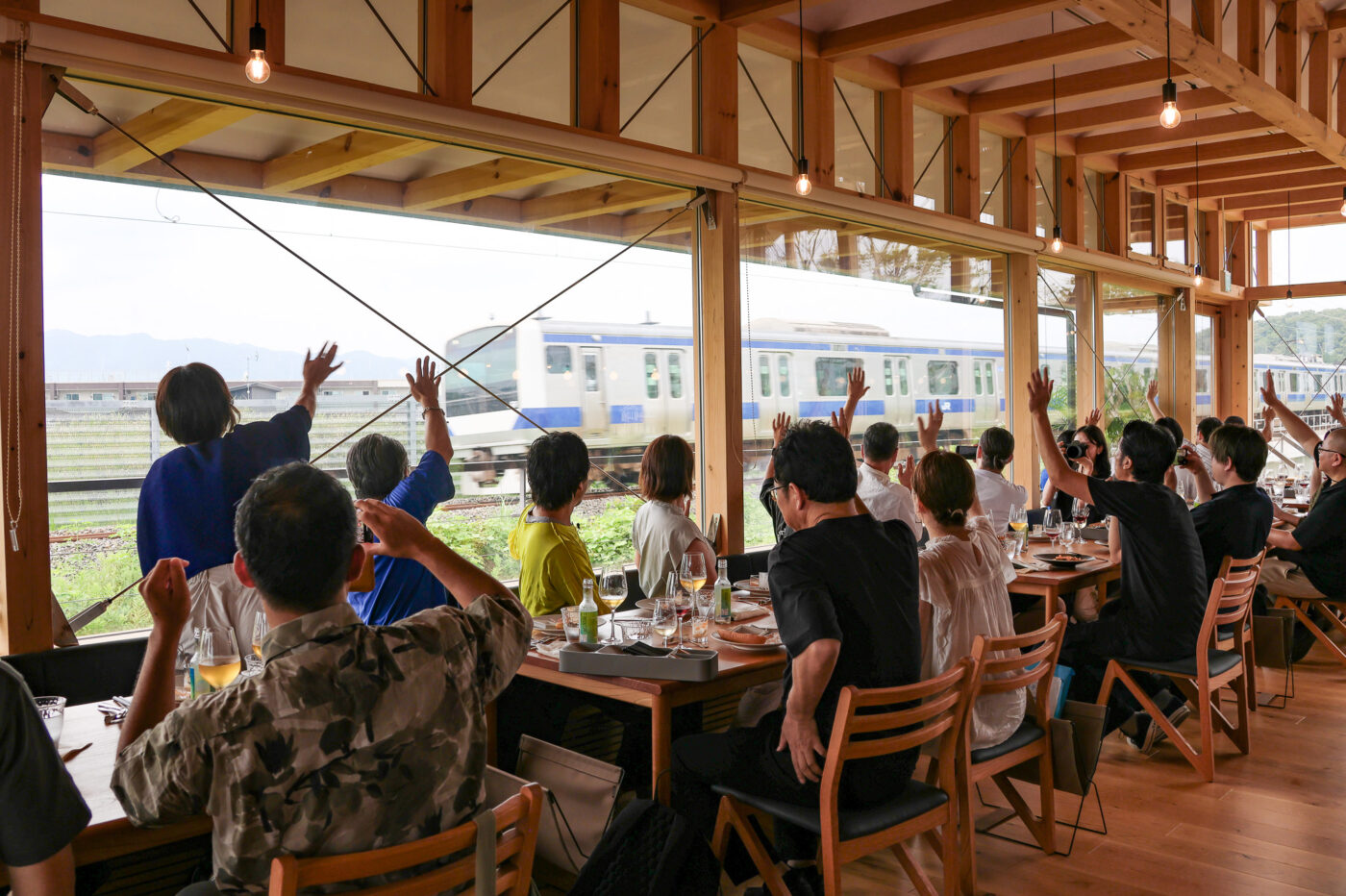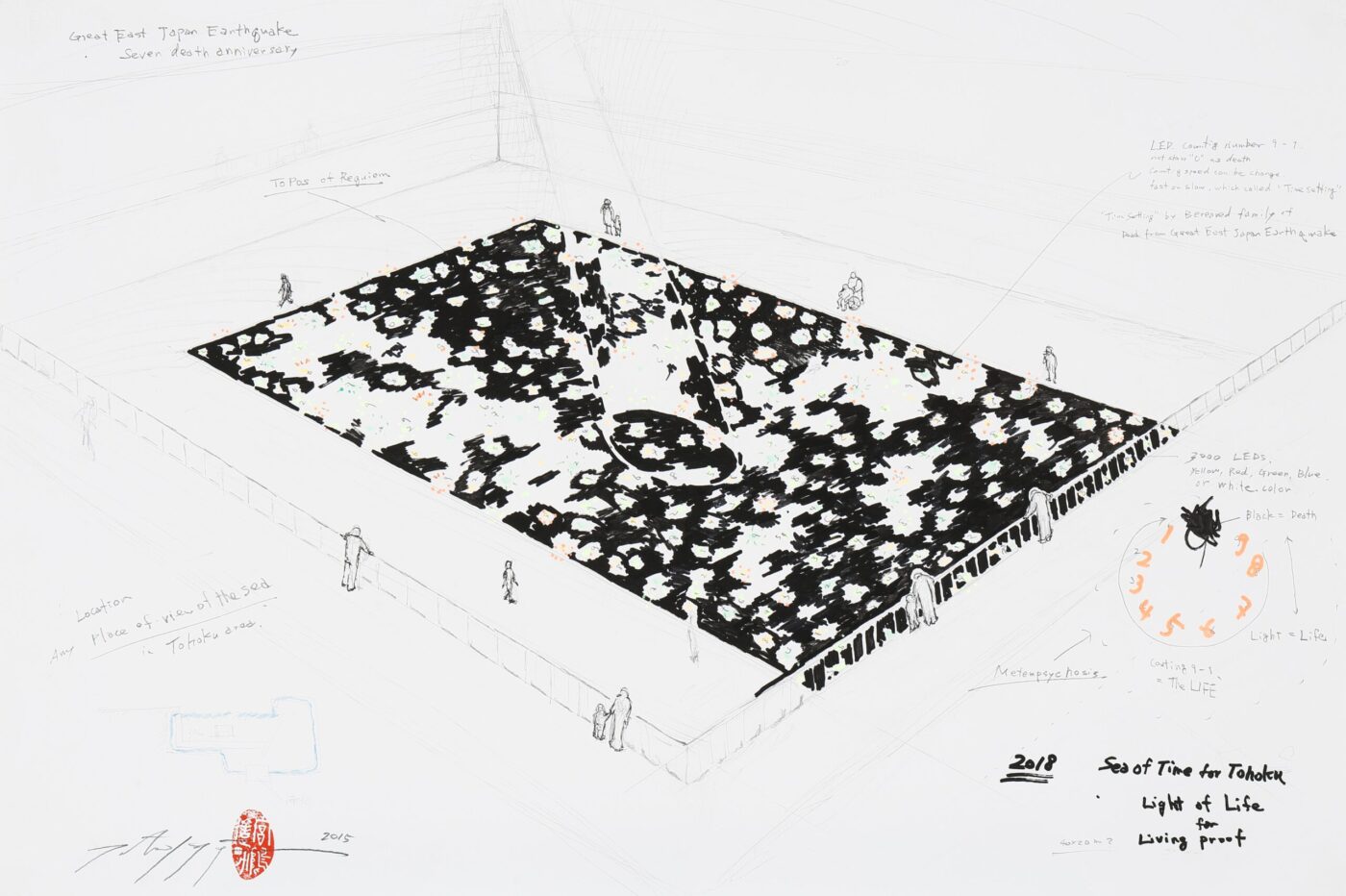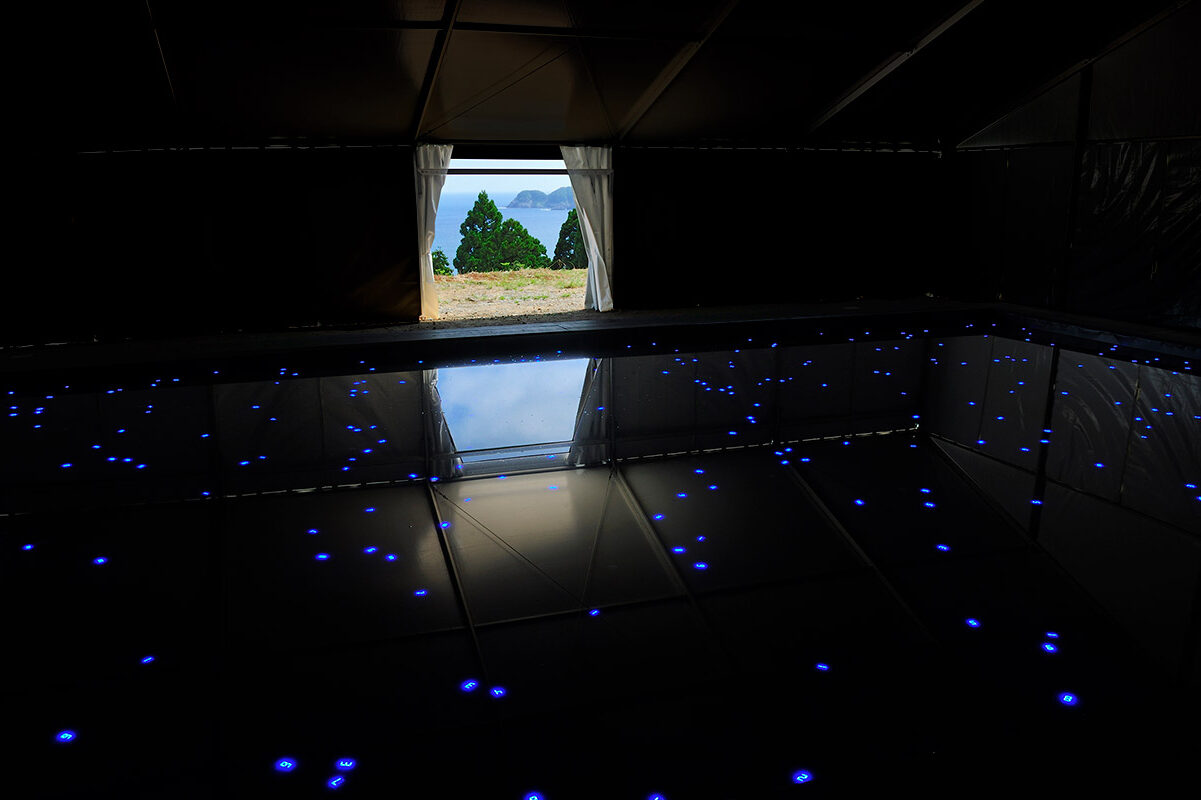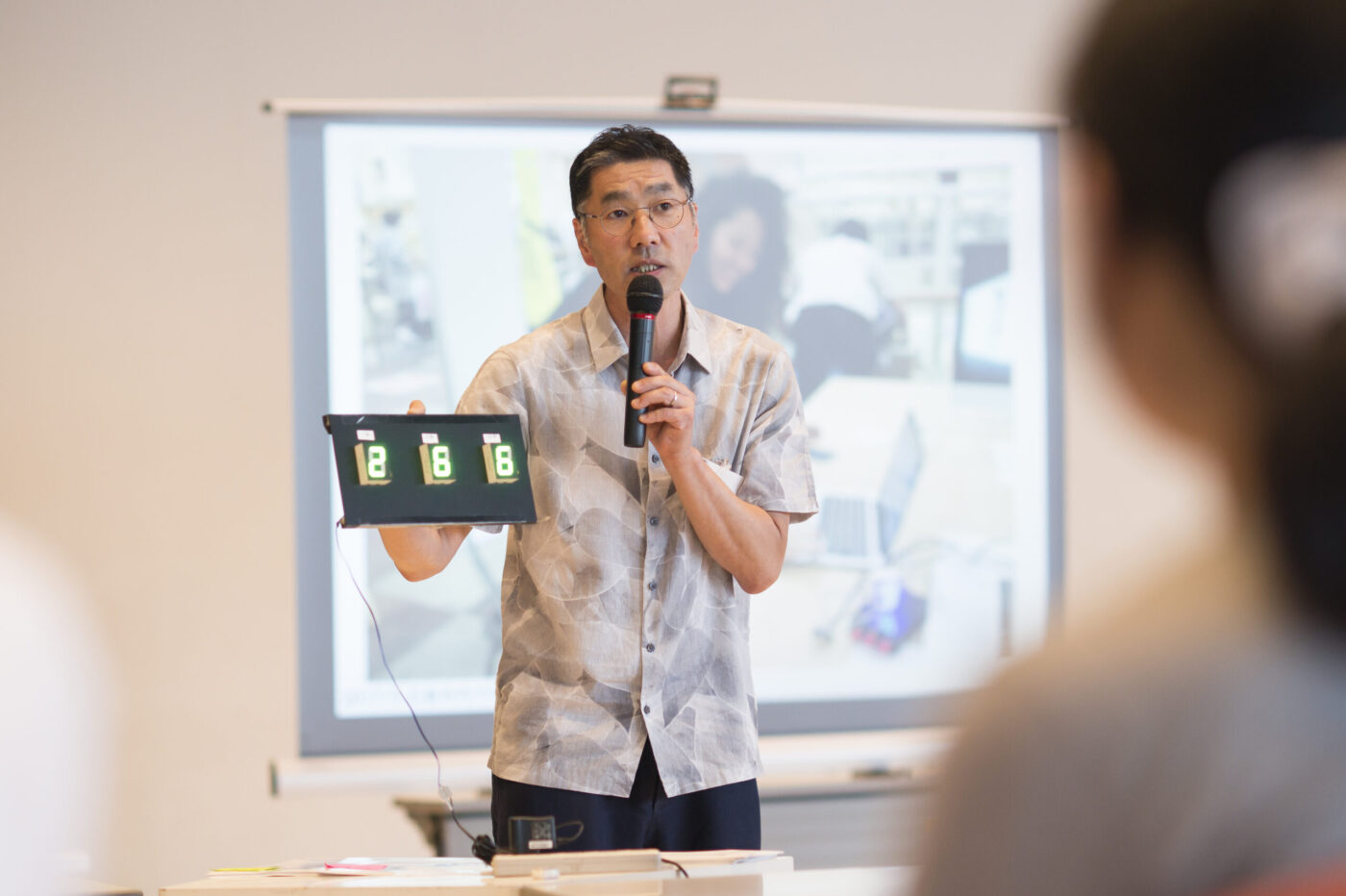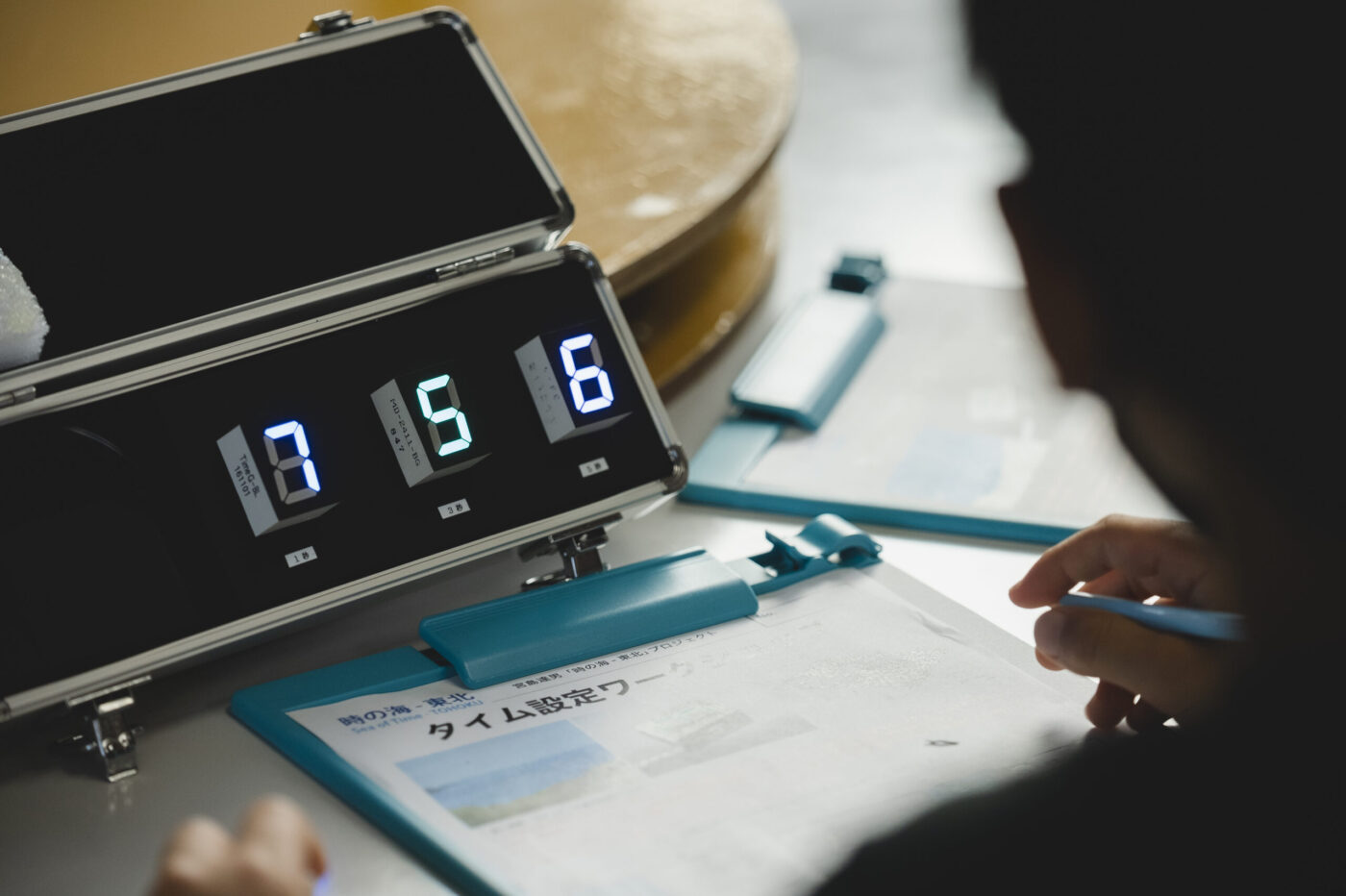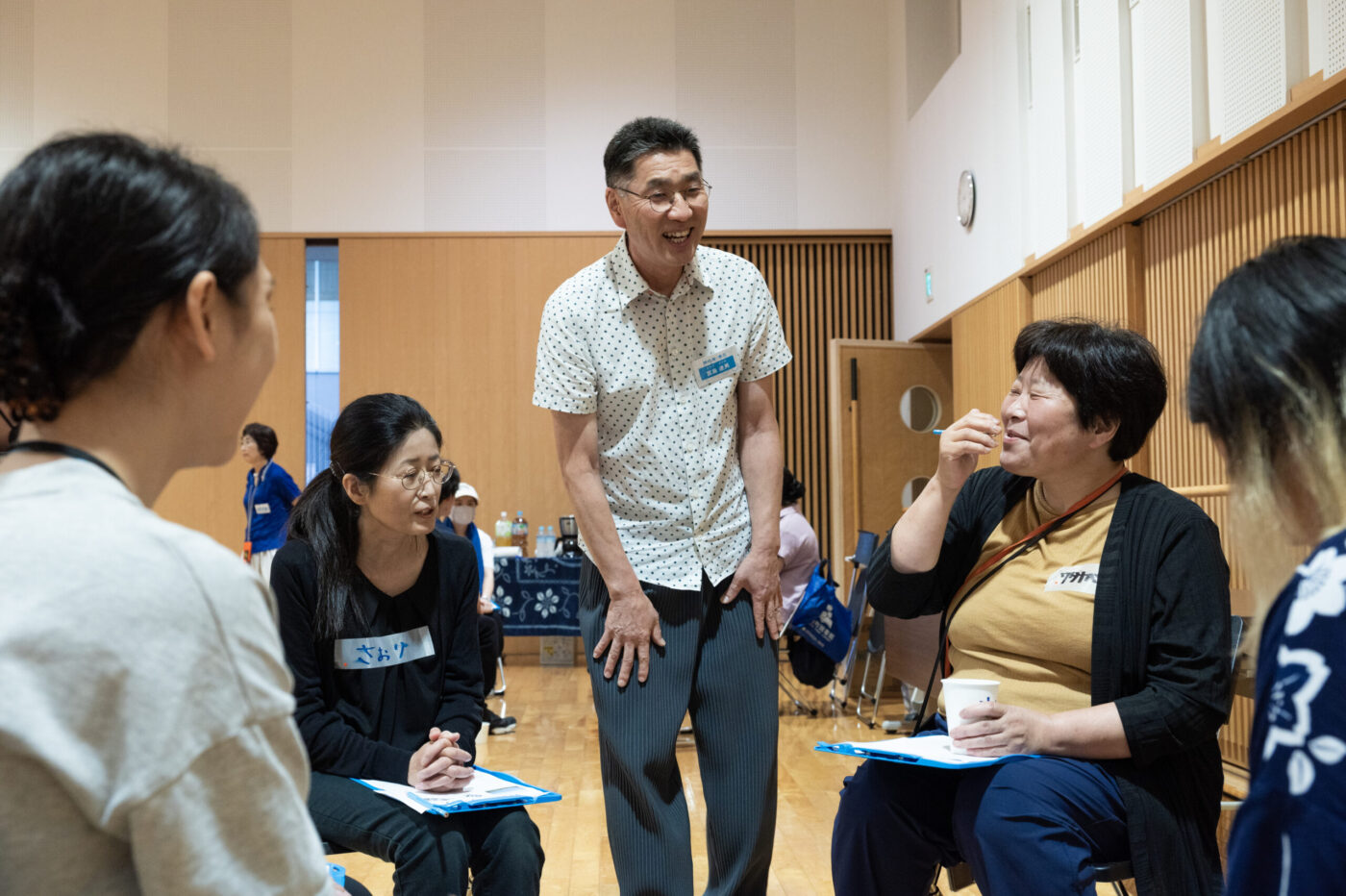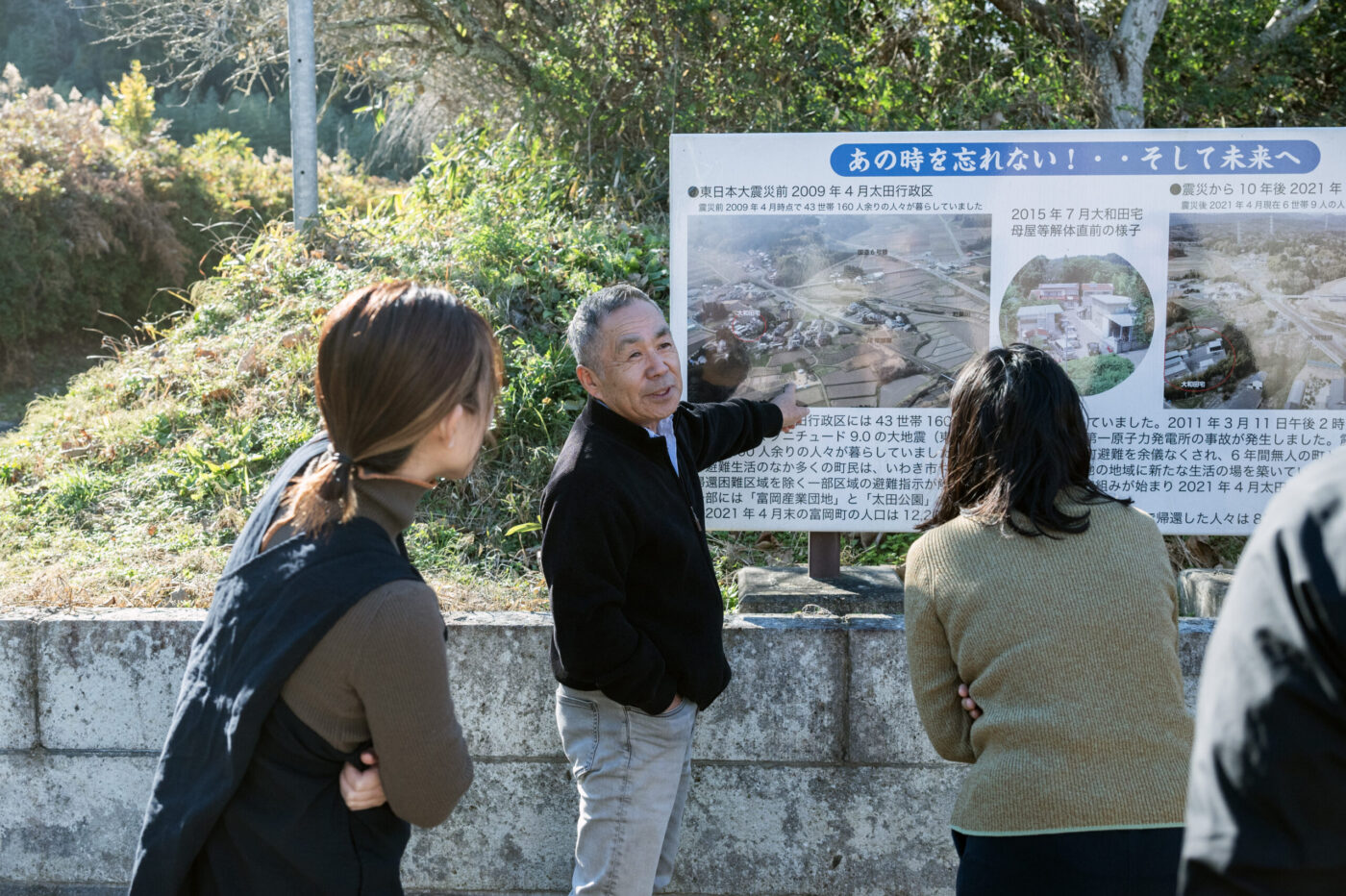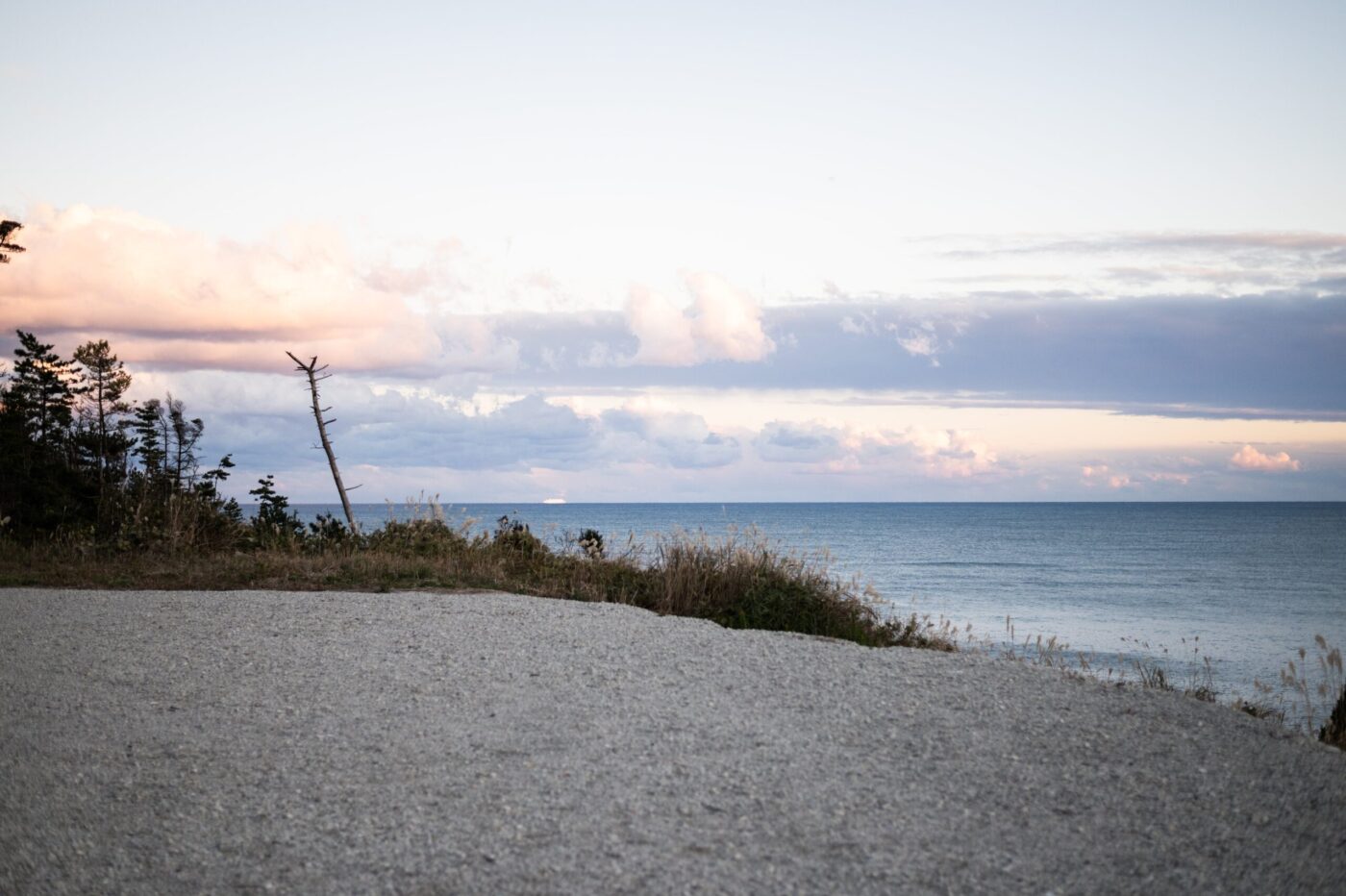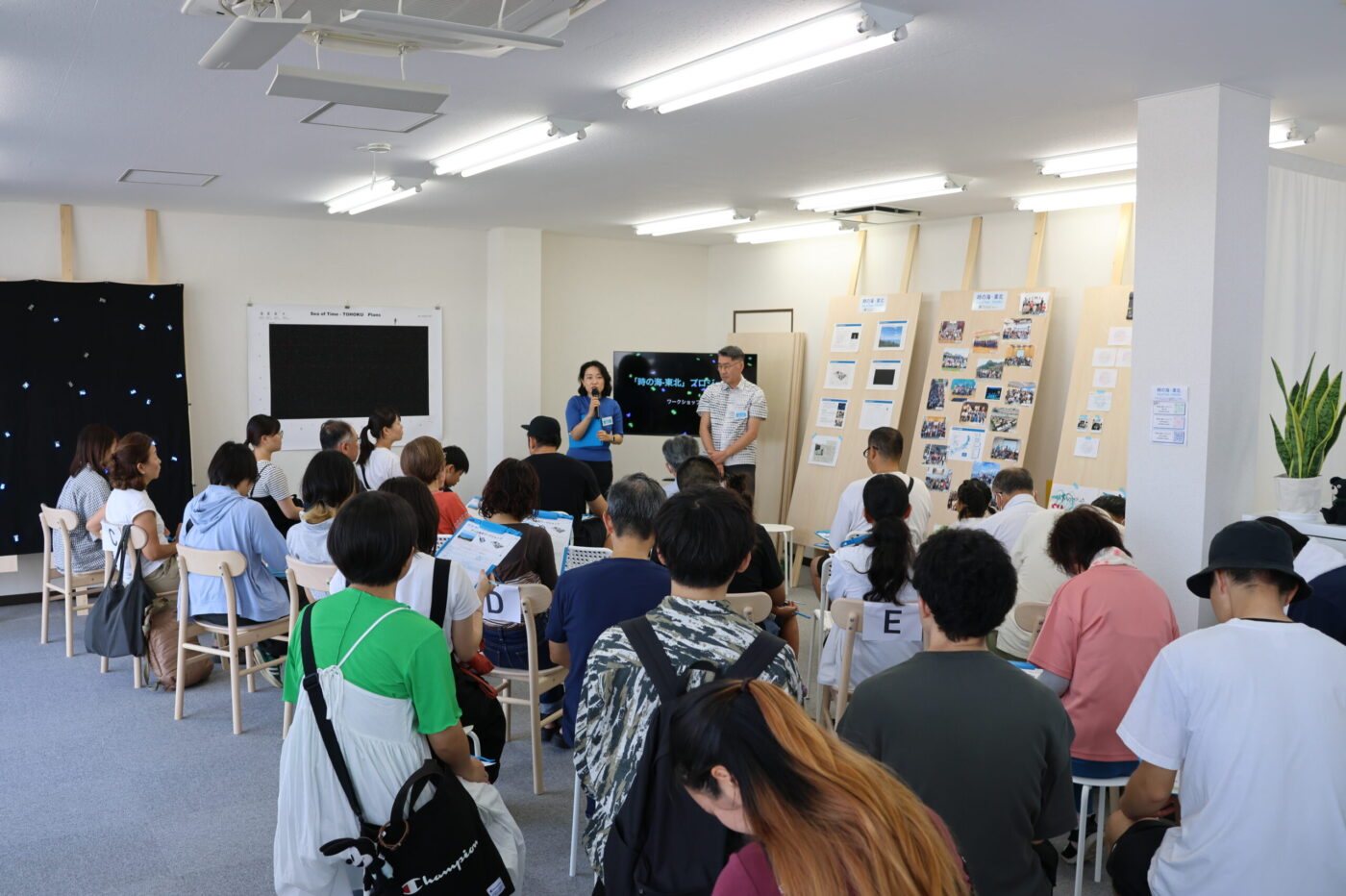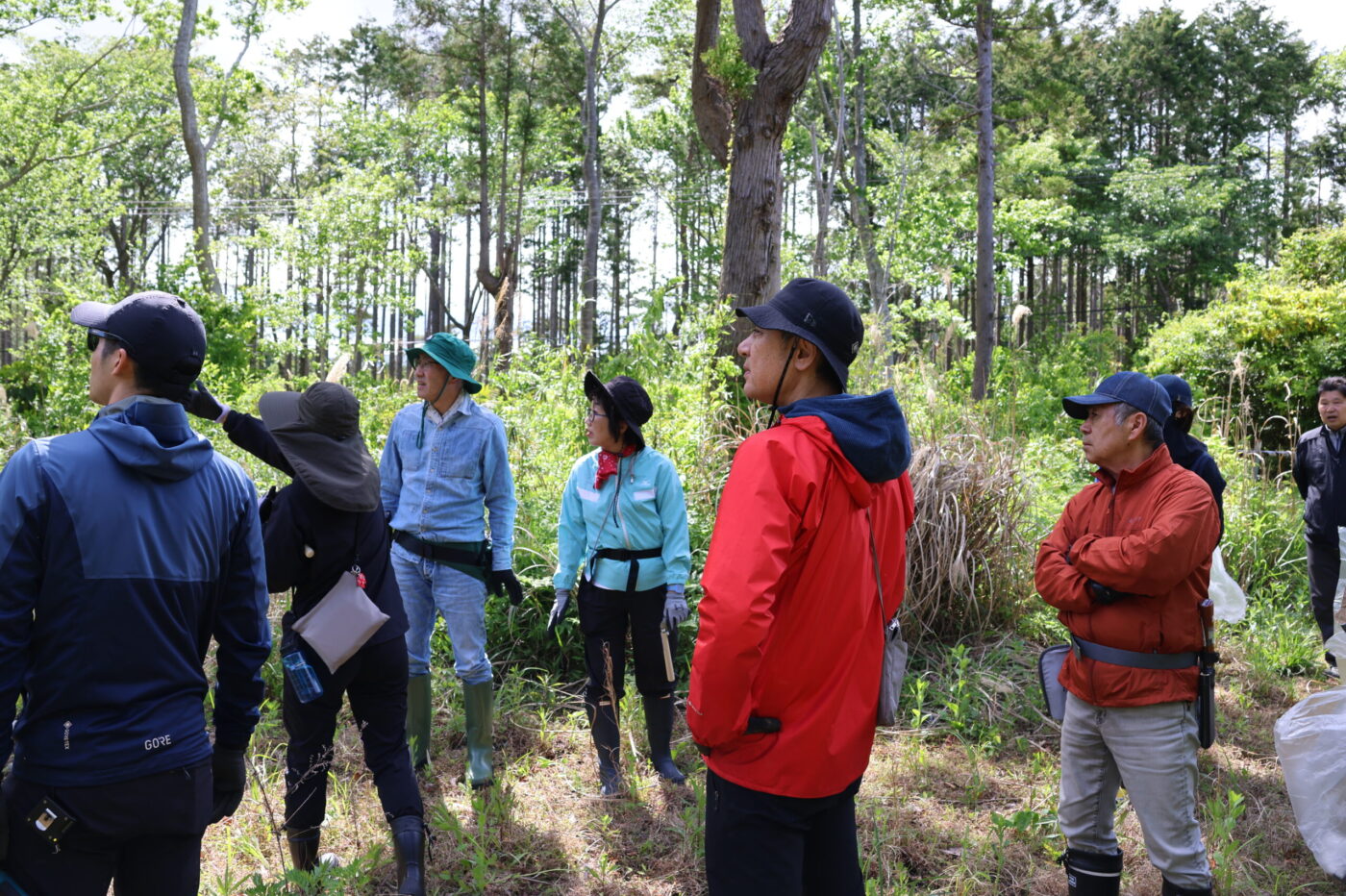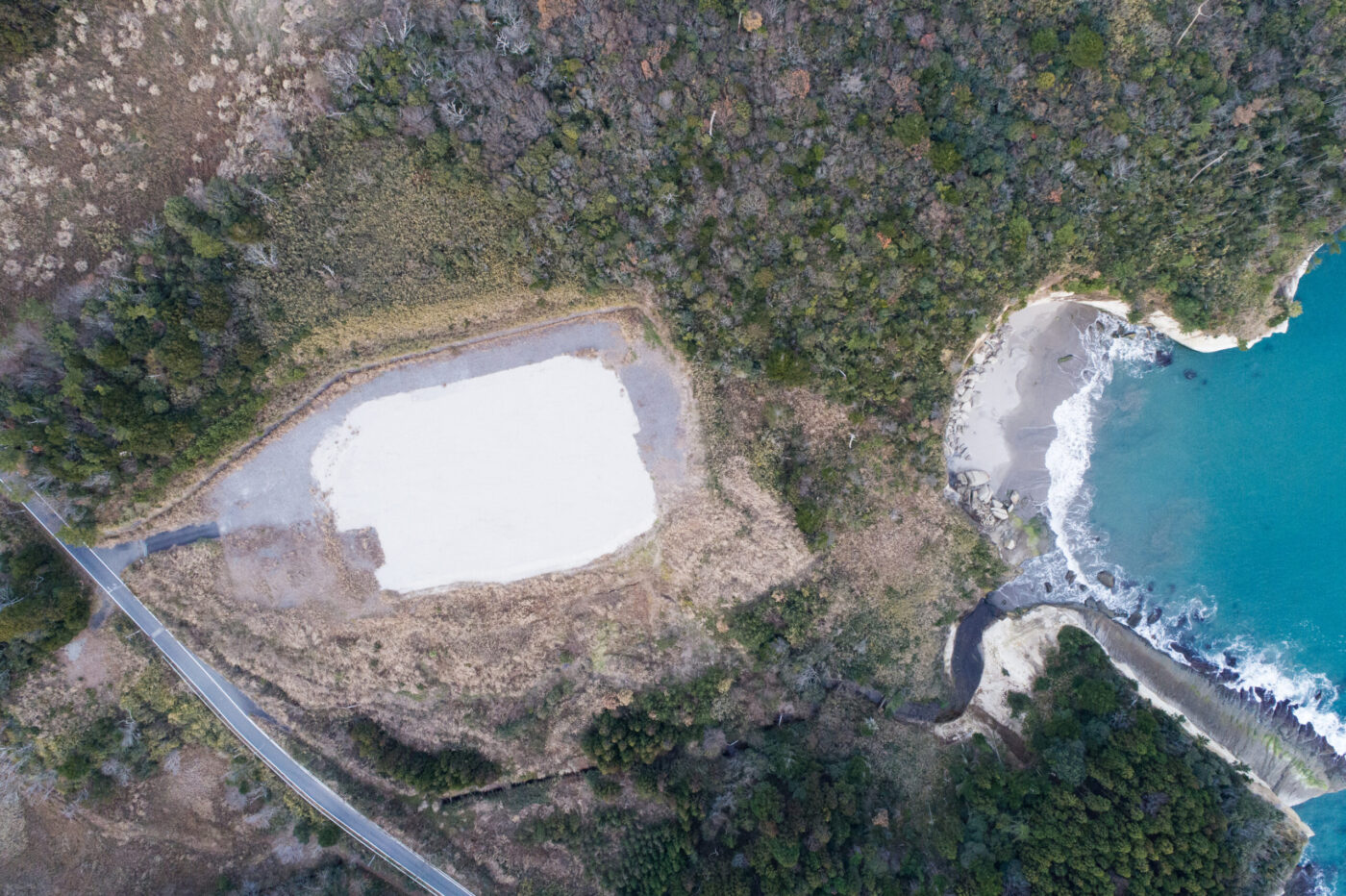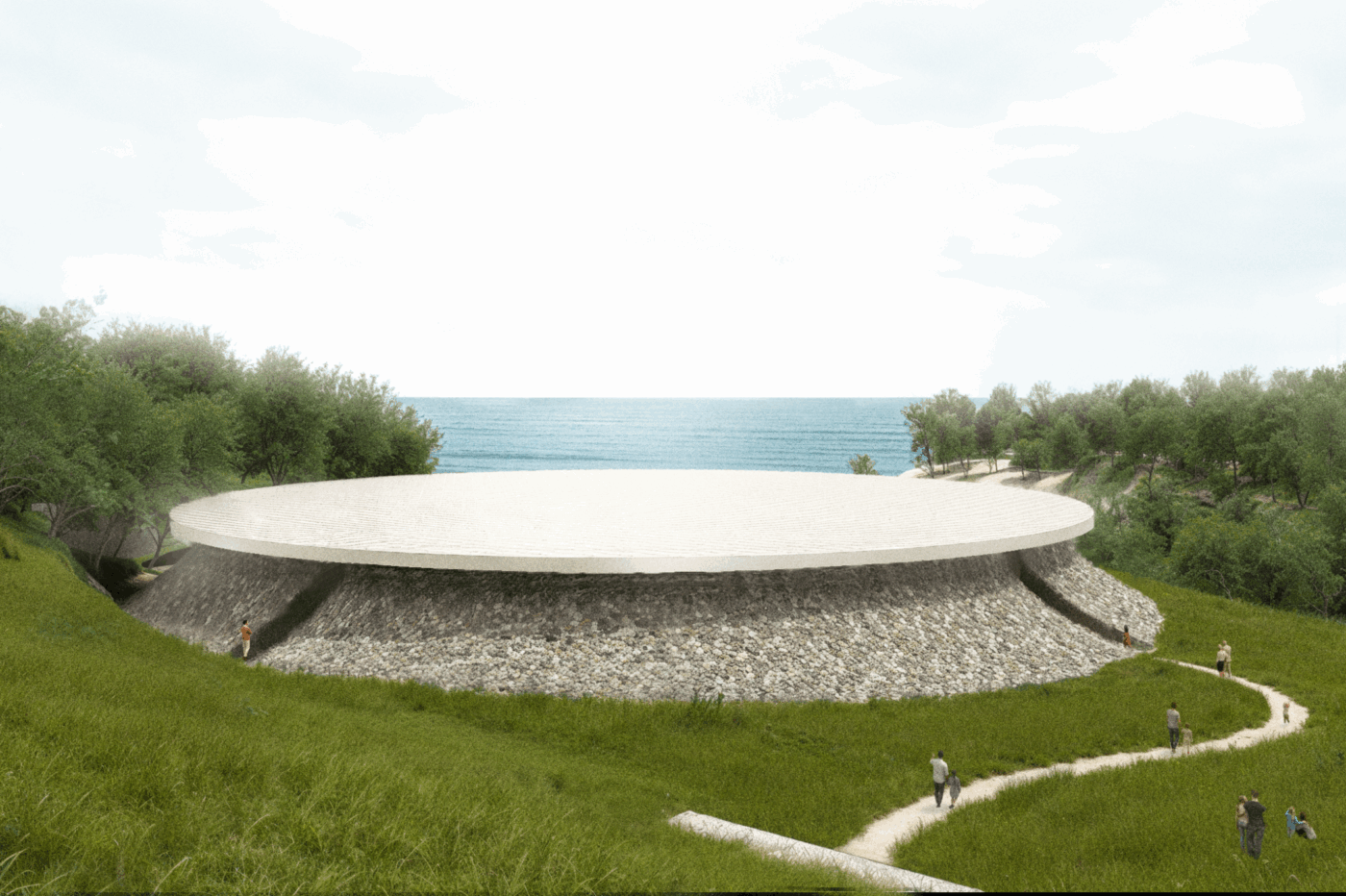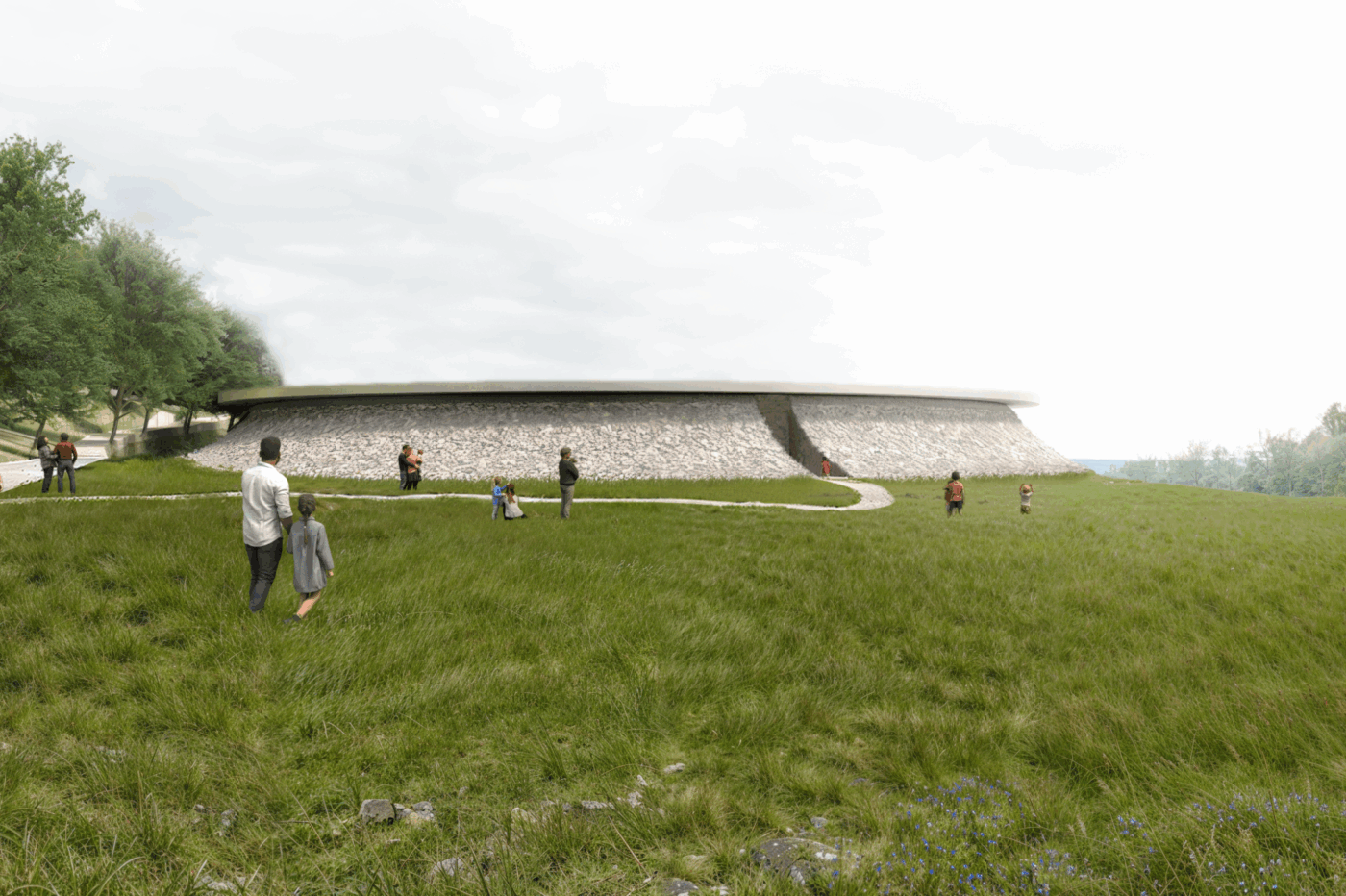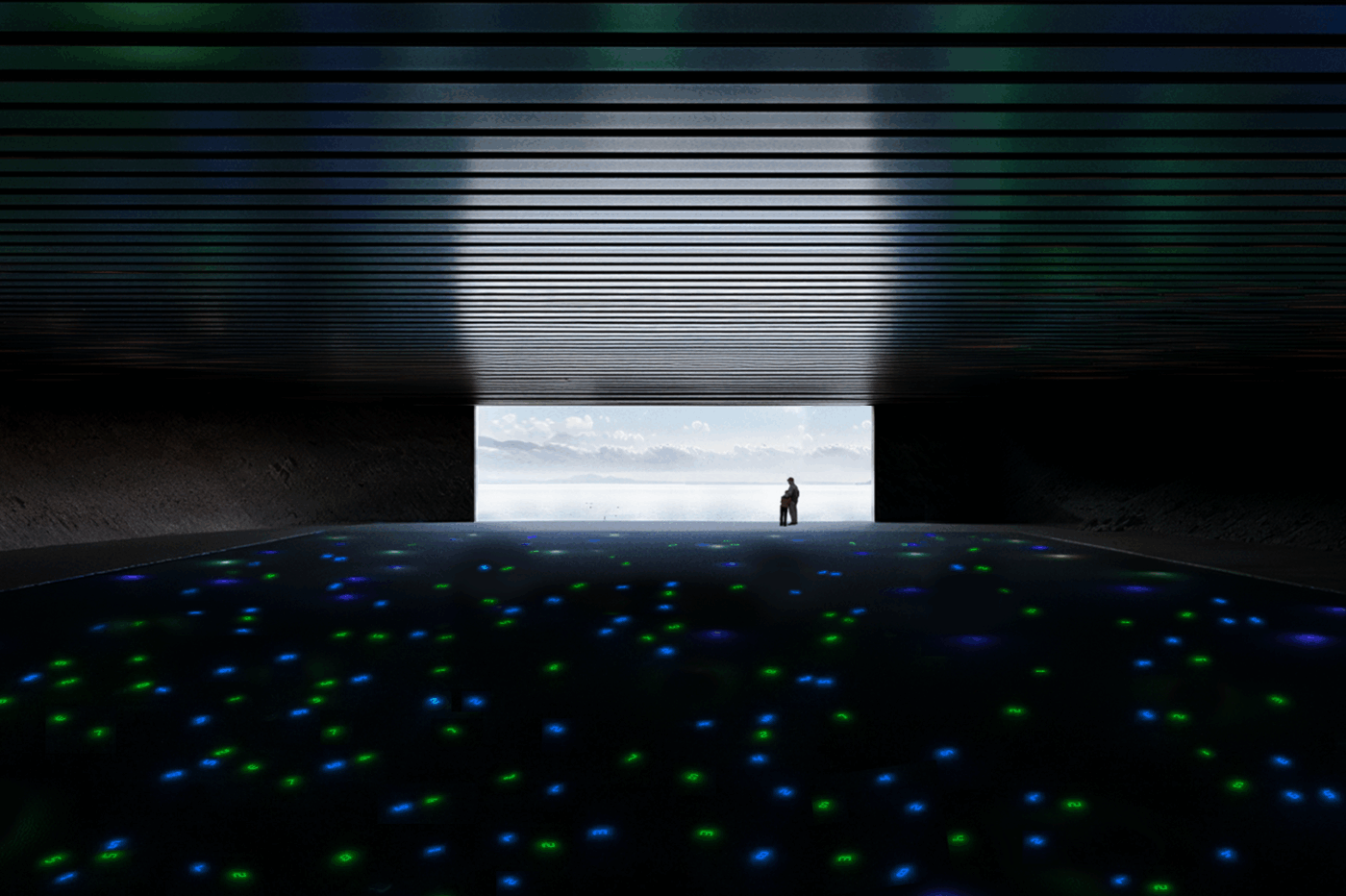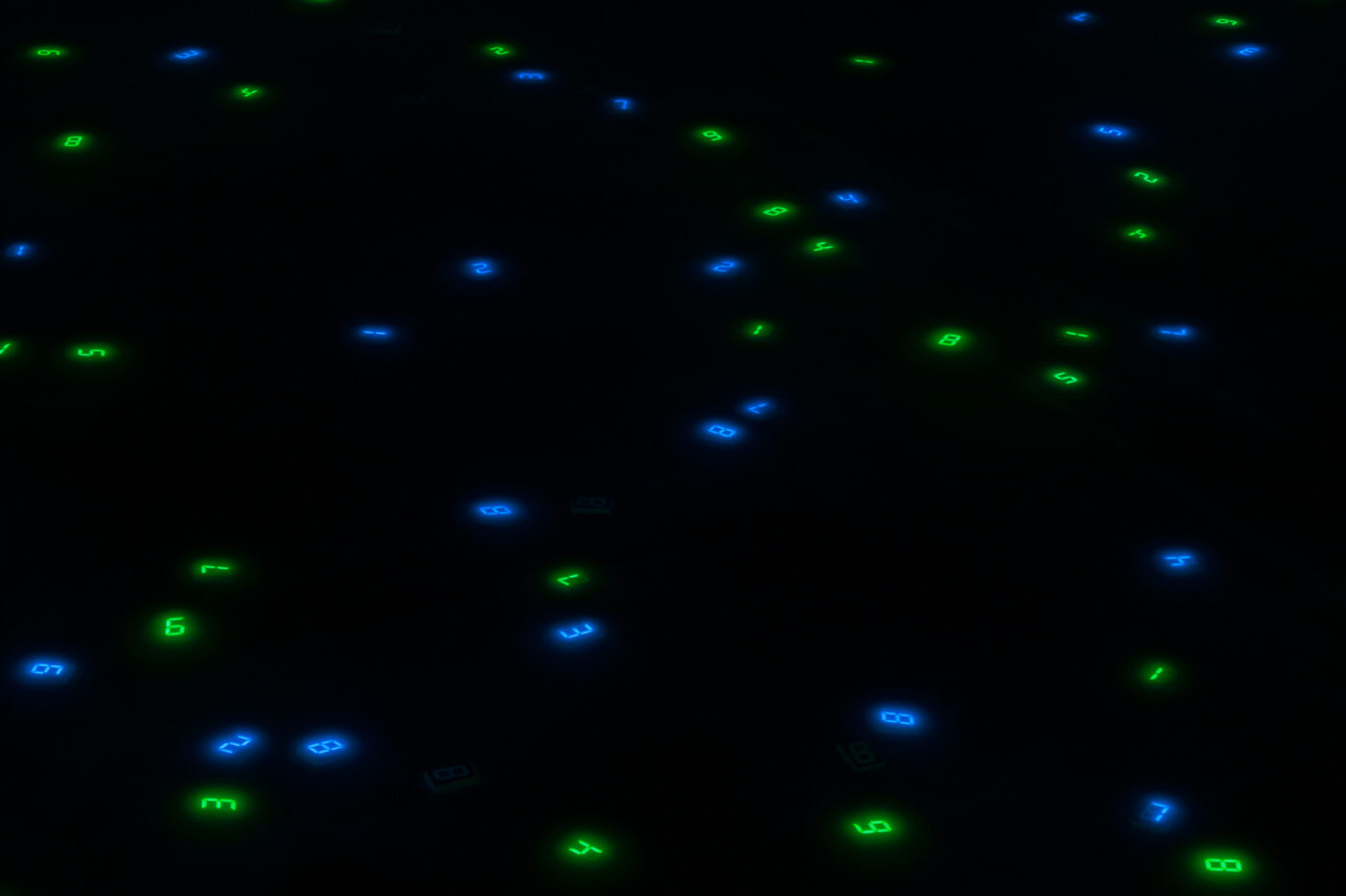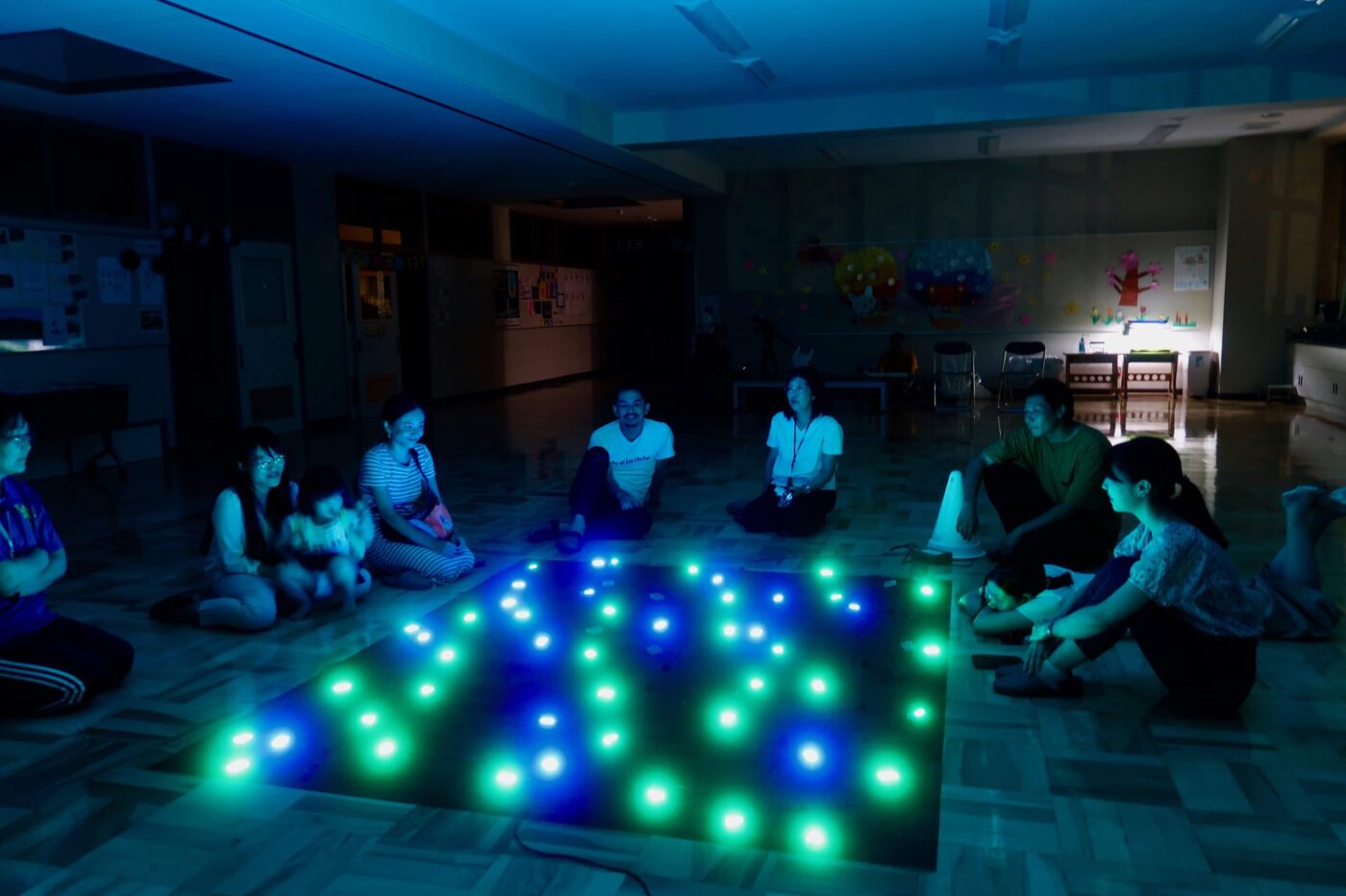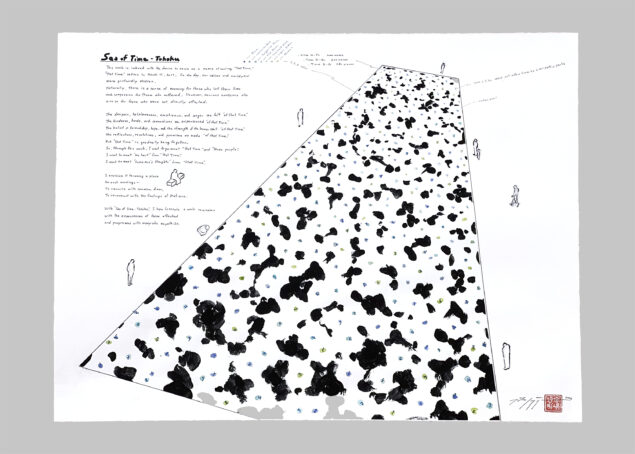
The Sea of Time – TOHOKU Project is a collaborative art initiative by contemporary artist Tatsuo Miyajima. Created together with many others, it is dedicated to mourning the victims of the Great East Japan Earthquake, preserving the memory of the disaster, and offering a space to reflect on loved ones and contemplate the future.
At its heart are 3,000 LED counters. Each LED counts down from 9 to 1, then disappears at 0 before beginning again from 9. The cycle continues endlessly. The speed of each countdown has been set by 3,000 participants — people living in Tohoku and others who wished to keep Tohoku in their thoughts.
The 3,000 LEDs will form a permanent installation in Tomioka Town, Fukushima, one of the areas affected by the disaster. Preparations for construction are now underway, and we are inviting supporters to join us in bringing this project to life.
- Message: From Tatsuo Miyajima
- 3.11: The Great East Japan Earthquake and Fukushima Daiichi Nuclear Accident
- Tomioka: About the Planned Construction Site in Tomioka, Fukushima Prefecture
- Process: The Journey of the Project
- Museum: Sea of Time - TOHOKU Art Museum
- Vision: The Vision of Sea of Time - TOHOKU
- Join the Project
- Links
Message: From Tatsuo Miyajima
On March 11, 2011, a massive earthquake struck Japan’s Tohoku region. The devastation did not come from the earthquake alone; along the coast, powerful tsunamis surged inland. Across the country, the number of dead and missing is estimated at around 18,500.
The disaster deepened in Fukushima, where the tsunami caused a severe accident at the Tokyo Electric Power Company’s Fukushima Daiichi (No.1) Nuclear Power Station. Vast amounts of radioactive material were released, and the area within 20 kilometres of the plant was declared a restricted zone.
Immediately after the disaster, I traveled to the affected areas as a volunteer. What I witnessed was devastating, and in the face of nature’s force I felt a profound
despair, realizing how powerless we truly are before it.
Once again, I asked myself: what can I do, and what can art do? Four years after 3.11, in 2015,I envisioned the idea for Sea of Time – TOHOKU.
It is a work to be permanently installed in the Tohoku region, using LED counters to carry forward the experience and memory of the disaster, while also creating a space to think of those we hold dear. I decided that this work should not be created by me alone, but together with 3,000 people from all walks of life.
From the outset, I knew this work must stand on a hill with a view of the sea — the sea I had seen during my volunteer work. I searched the coastline for nearly three years, until I finally found a place so ideal it gave me goosebumps. I loved it instantly. As if by fate, the place that I found was Tomioka Town in Fukushima. It was located between the Fukushima Daiichi (No.1) and Daini (No.2) Nuclear Power Stations.
I firmly believe that this project, which I consider my life’s work, will be unlike any other: a work that invites reflection on life and death, on the meaning of existence, and on the future itself.
To make this project a reality, much support is still needed. I invite you to join us as one of those helping to shape this place together.
Tatsuo Miyajima
*The full message can be viewed here.
3.11: The Great East Japan Earthquake and Fukushima Daiichi Nuclear Accident
On 11 March 2011, the Great East Japan Earthquake struck off Japan’s northeastern coast, unleashing devastating tsunamis. Entire towns were swept away, lives lost in an instant, homes reduced to wreckage. Yet in Fukushima, the disaster did not end with the sea. When the Tokyo Electric Power Company’s Fukushima Daiichi (No.1) Nuclear Power Station melted down, an invisible threat spread across the land.
Radiation forced more than 160,000 people to leave. Some fled overnight, never to return. Villages became ghost towns; schools, farms and neighborhoods were abandoned. Families were fractured across generations — children growing up in prefabricated housing, the elderly unable to return to the soil their ancestors had tilled for centuries.
The nuclear accident left scars that could not easily be seen. It brought not only contamination, but also fear and stigma that lingered long after the waves had receded. Even in distant cities, daily life shifted: questions arose about food safety, scheduled power cuts were introduced, and a quiet anxiety spread across daily life.
Fukushima became a turning point. It was not only a local tragedy, but a rupture that revealed how fragile our lives are when nature and technology collide. It raised unsettling questions about energy, responsibility, and memory. And yet, as the years passed, the urgency slowly faded. What was once unthinkable risked being forgotten.
The date 3.11 remains a reminder — of loss, of resilience, and of the choices that lie ahead.
Sea of Time – TOHOKU arises from this urgency: to create a place where memory endures, where dialog continues, and where art keeps alive the questions we cannot afford to forget.
Tomioka: About the Planned Construction Site in Tomioka, Fukushima Prefecture
In 2025, the Sea of Time – TOHOKU Project found its place in Tomioka Town, between the Daiichi (No.1) and Daini (No.2) Nuclear Power Stations — a landscape marked by loss, resilience, and the search for renewal.
When the nuclear accident happened on 12 March 2011, Tomioka Town was placed under an immediate evacuation order. Before the disaster, nearly 16,000 people lived here. Overnight, that number fell to zero. Families were forced to abandon their homes, leaving behind streets, schools, shops, and farms that had formed the fabric of daily life. For years, the town stood silent, its houses overgrown, its communities scattered across Japan. The absence was not only physical; it carried the weight of severed traditions and fractured memory.
Over the years, evacuation orders have been gradually lifted, and people have begun to make their way back. As of 1 September 2025, 2,673 residents are officially living in the town once again. Shops reopen, children’s voices return to playgrounds, and local festivals cautiously resume. Alongside returning residents, newcomers from other parts of Japan are also beginning to settle, joining with locals to create new rhythms of life and future possibilities. Yet recovery here is not simple. Coming back does not erase the years of displacement, nor the lingering questions of safety, trust, and identity. For many, Tomioka Town remains both a cherished home and a reminder of profound vulnerability.
It is within this complex landscape that Sea of Time – TOHOKU will take shape. To root the project here is not only practical but symbolic: to acknowledge a town suspended between devastation and rebirth, absence and presence, silence and dialog.
Tomioka Town is more than a location; it is a witness. And in its witness, Sea of Time – TOHOKU becomes both remembrance and a promise of renewal.
Process: The Journey of the Project
In 2015, the concept for Sea of Time – TOHOKU was presented. Since then, the work has been created together with more than 2,800 participants from across Japan, especially in the Tohoku region. Today, preparations are underway to permanently install the 3,000 LED counters — each imbued with personal thoughts and feelings — at a site overlooking the sea in Tomioka Town, Fukushima Prefecture.
Museum: Sea of Time – TOHOKU Art Museum
The Sea of Time – TOHOKU Art Museum will be built in Tomioka Town, between the Fukushima Daiichi (No.1) and Daini (No.2) Nuclear Power Stations — a landscape forever shaped by loss, yet searching for renewal.
The site spans 36,744 square metres — an open expanse equal to five football pitches. From the entrance, visitors walk slowly towards the sea. With each step, the sound of the waves grows, a gradual unfolding of the ocean’s presence. It is a soundscape of memory: gentle and beautiful, yet inseparable from the events of 3.11.
The museum will be designed by Tsuyoshi Tane, an architect known for drawing deeply on memory and place. His vision is not to impose but to create a building that listens — a space where silence, sound, and art can speak together.
Here, Sea of Time – TOHOKU will find its permanent home. But more than a structure, the museum will be a living site: a place where remembrance is kept alive, where art continues to raise questions, and where dialog across generations can take root.
In Tomioka Town, the museum will stand as both witness and promise — carrying memory forward while opening a horizon of hope.
Name: Sea of Time – TOHOKU Art Museum (Provisional Name)
Location: Tomioka Town, Futaba District, Fukushima Prefecture
Site Area: 36,744 m2 (Planned)
Design: ATTA ‒ Atelier Tsuyoshi Tane Architects
Completion: 2027 (Planned)
Vision: The Vision of Sea of Time – TOHOKU
Sea of Time – TOHOKU is a project to create a place where memory endures, where imagination for others is awakened, and where hope for the future can take root. Emerging from the aftermath of 3.11, it is a sea of light that gathers remembrance and disperses it again into the world.
1. Embracing life, nurturing imagination for others
At the heart of the work are thousands of LED counters, each blinking in its own rhythm. These quiet pulses symbolize the eternity of life — not as a single, unbroken line, but as countless fragile sparks that appear, disappear, and return. Within each flicker lies a thought: a wish, a memory, a breath. As visitors watch the undulating waves of light, they are drawn into reflection — on loved ones, on life and death, on the fragility and wonder of existence. Through this act of contemplation, imagination for others begins to grow, and the strength to go on living is quietly renewed.
2. A vessel for memory and transmission
A total of 3,000 people will inscribe their memories and hopes into this work. In Buddhist thought, the number 3,000 symbolizes the totality of existence — a reminder that within this collective act lies a vision reaching far beyond the individual. Through their participation, Sea of Time – TOHOKU becomes more than an installation: it becomes a vessel carrying the lived experiences of the earthquake, the tsunami, and the nuclear accident.
Here, memory is not abstract or remote. It is embodied in light, transmitted through silence, and encountered through imagination. The work invites each visitor to listen — to those who endured, to those who were lost, and to the unspoken questions that remain. In this way, remembrance does not stagnate; it flows forward, continuing as a dialog across generations.
3. A gateway to Tohoku today
The project also opens towards the present and the future. Through collaboration with artists, designers, NPOs, companies, residents, and local government, the museum will become a place of encounter with the living culture of Tohoku. Visitors who come seeking memory will also find creativity and resilience; they will meet a region that continues to imagine new ways of living after catastrophe. Each encounter becomes the beginning of a relationship, weaving fresh connections between people, communities, and places.
Join the Project
The Sea of Time – TOHOKU Project has been made possible through the commitment of artist Tatsuo Miyajima and the generosity of those who share in its vision. From the very beginning, both the creation of the work and the activities that sustain it have relied on personal funds and donations.
We recognize every contributor as a “Support Artist.” This title reflects the collaborative spirit at the heart of the project: each contribution is not simply financial support, but a gesture that becomes an integral part of the work itself. In the future, the names of all Support Artists will be permanently inscribed within the completed museum, ensuring that their presence endures alongside the artwork for generations to come.
Donations directly support essential costs — from the production of 3,000 waterproof LED counters, to the preparation of the site, and the construction of the museum. Much remains to be done, and continued support is vital.
By becoming a Support Artist, you join a collective act of remembrance and renewal, helping to ensure that the light of Sea of Time – TOHOKU carries forward into the future.
If you share the vision of Sea of Time – TOHOKU and wish to support its realization, we warmly invite you to join us.
The target construction cost for the museum is 2 billion yen. Fundraising is currently underway through donations and sponsorships.
For details, please visit our donation page. All donations are securely processed through a trusted service to ensure that your contribution is fully protected. We are deeply grateful for your support.
2. Purchasing Artworks
|[ Visit the artwork purchase page ]Works by Tatsuo Miyajima are available for purchase. Each purchase functions as a donation, with proceeds supporting the production and operation of Sea of Time – TOHOKU. Please note that availability is limited.
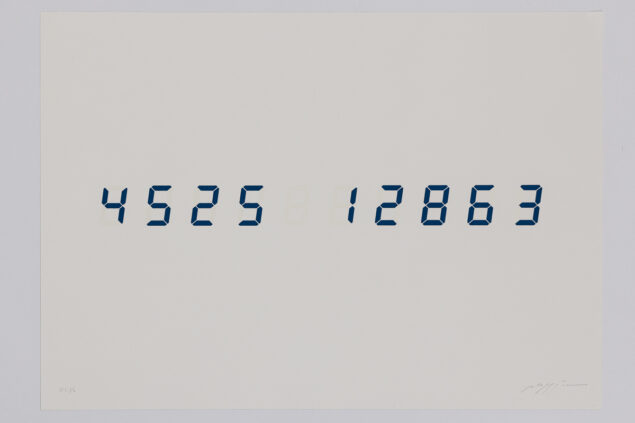
Life Face for Sea of Time – TOHOKU Type A|©Tatsuo Miyajima, Courtesy of Akio Nagasawa Gallery
[Recognition]
Every supporter is recognized as a Support Artist. Your name will be inscribed in a dedicated place when the work is completed, and may also be acknowledged in our publications and on the project website — a lasting testament to your support. If you would prefer to remain anonymous, simply let us know in the remarks section when making your donation, and we will respect your wishes completely. By joining, you become part of a collective act of remembrance and renewal. Your support helps to create not only an artwork and museum, but a space where memory, imagination, and hope can endure for generations.
Links
We share the latest updates on the project through our social media channels. There you can find interviews with people living in Tohoku and with Support Artists, progress reports on the project, coverage of events, and glimpses of everyday life in Tomioka Town.
Subscribing to our newsletter or following us on social media is a meaningful way to support the project. We would be grateful if you could continue to accompany us with your interest and encouragement.
・Newsletter subscription: [ URL ]
・Instagram: [ URL ]
・YouTube: [ URL ]
・Sea of Time – TOHOKU Project website: scheduled to open in 2026
We have released an introductory video for the Sea of Time – TOHOKU Project.
The film conveys Tatsuo Miyajima’s vision alongside scenes of the museum’s construction, the surrounding natural landscape, and the lives of people in Tomioka.

Work in progress (2017—)
Project Team
Plan_Tatsuo Miyajima
Architect_Tsuyoshi Tane
Graphic design_Rikako Nagashima
Support_Sea of Time - TOHOKU Art Museum Supporters
Project direction_Tae Yoshihara
